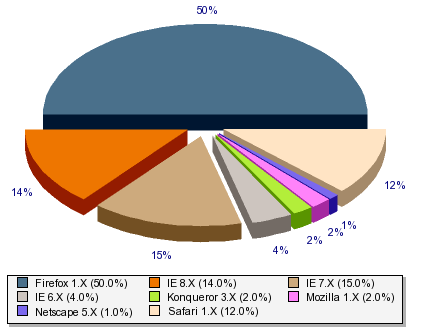 Well, it is more than five years ago that I blogged about the fading away of people using Netscape Navigator 4.x versions to visit my website, a year later about the reduction in people browsing my site with Internet Explorer 5.x and about the first sightings of Internet Explorer 7.
Well, it is more than five years ago that I blogged about the fading away of people using Netscape Navigator 4.x versions to visit my website, a year later about the reduction in people browsing my site with Internet Explorer 5.x and about the first sightings of Internet Explorer 7.
Today things are different, and Microsoft’s Internet Explorer 6.x is the beast that keeps me from implementing cleaner HTML code for this website. But there are good news: In the last months, the number of people visiting this site with Internet Explorer 6.x has more and more often been smaller than the number of users browsing the web with the current 8.x incarnation of the beast. This is good news, because the new version 8.x is much more standards compliant and it finally, finally supports the use of the quote tag <q>. That means that more people will acutally see the quotation marks around the quotes (“” for English, „“ for German) that I coded into this blog and the other pages offered here.
When the amount of IE 6.x users consistently remains below three percent, I will kick out the hacks that I put into the code to work around IE 6.x’s annoyances. Maybe that will also be the day when I will introduce the first pages that are coded in HTML 5, something that I am really looking forward to because the new <video> element will make embedding video in a standards conformant way much easier.
Bye bye, Internet Explorer 6.
August 2nd, 2009Che: Part One – Too many people.
May 22nd, 2009I have seen this movie a few weeks ago, but forgetfulness and a lack of enthusiasm postponed the writing of this review considerably. I’ve never been such a huge fan of Steven Soderbergh even though Hollywood treats him with the reverence paid to a real, critical intellectual. I guess I never found his movies particularly engaging. Sadly, the same is true for the first of two films about Che Guevara. Although I really like the very manly Benicio del Toro, the movie did not take enough time to create some emotional attachment to the Che as he plays him. Maybe the camera is too distanced, maybe the story is told in a way that is too factual. But maybe it was just because there were so many different people who flitted in and out of the picture, who seemed to be important revolutionaries that probably everyone on Cuba knows by name. But for me they were just that: names and faces that appeared, seemed significant, but then never turned up again. This left me somewhat confused and distanced. Other than that, the story of the cuban revolution is interesting, of course. But the movie neither suceeded intellectually, i.e. it did not do much to enlighten me about the structural forces that set the revolution into motion, nor did it suceed emotionally, because I did not feel the engagement of the protagonists with their mission. One thing I liked though: it was the somewhat cold way in which the revolutionaries (and, of course, the military) dealt with human losses. Regardless if they are traitors or if they are old and trustworthy comrades: the guerilla war kills, and there is not much time for grieving. The revolution must proceed. The inevitability of this and the emotional detachment that might be necessary to keep it moving was striking for me in an almost Brecht-like way. I guess I will also watch the second part of this movie, but my expectations won’t be particularly high.
Slumdog Millionaire – Splendid storytelling.
April 21st, 2009I haven’t seen most of this year’s Academy Award nominees, not even Slumdog Millionaire, which won more Oscars than any other movie during this year’s ceremony. Now that I am slowly getting to watch these movies I hope that all of them will be as good as this one. I have expected a flashy movie with a Hollywoodesque tear-driven story set in some really poor foreign place where people wear lots of colorful clothes. And in a way, you could describe Slumdog Millionaire like this. It remains a story with a good ending, it sticks to quite a few stereotypes (regarding the distribution of agency along gender differences, for example), and it is very entertaining.
But it is also more than that, maybe even much more. The way the story of the main protagonist is told is quite beautiful. Like Sheherazade from One Thousand and One Nights, our hero has to save his life by telling stories. But in difference to the Arabian Nights, the stories are all about the hero himself, they tell us how he became who he is now. And they also encompass a love story. The movie works so well because it is so well produced: the editing changes between fast-paced and detailed, the soundtrack can quicken your pulse to fit the energy of the movie, the places, people and outfits have been selected extremely well – this was one of the first times when I could really understand why the Academy distributes so many Oscars to a single film: all elements fit together, pushing the whole enterprise onto a much higher level. Watching this film has been a charming, exhilarating and moving experience – more so than I expected. I definitely recommend watching it in a cinema if you have the chance. This is not the greatest movie in years or even for this still young year (see the entry below on Let the right one in). Nonetheless, it is an extraordinary movie that speaks to the heart and the senses in its own, touching way.
IMDb entry | Trailer
Låt den rätte komma in – The innocence of loosing your innocence.
April 19th, 2009When I saw the trailer for this movie I thought: this is a pretty neat idea. A girl of twelve years is presented as one of the epitomes of sin: a vampire, even worse, a dirty vampire, who licks bloods from the floor of a crappy room. Whose blood is it? The blod of an angel: a blonde, young, Swedish boy with blue eyes and a slight nose trickle. This is the constellation that is being developed in Let the right one in: a vampire girl who looks like she might have a migrant background and a local boy whose life and character are more complex than one would expect from his face – complex even before the arrival of Evi, the creature who drinks the blood of human beings. The film is moving in a very slow pace. Long takes show the faces of the protagonists. They show the places they live in. They show their interactions. Set in a gloomy winter atmosphere, the really well-cast, charming and at the same time frightening characters encounter each other: talking, bullying, playing and killing their way through night and day. The film succeeds at giving almost all characters more depth than one would expect in a horror or vampire flick. It is definitely more than a simple genre movie. It allows one to identify with all of these different characters and their problems – both small and mind-blowingly huge problems. This movie got me really involved, charmed, amused, shocked, frightened, and all of the time deeply engaged. It is a love story that tells us about how we can loose our innocence while maintaining it. About how we maintain our innocence by giving it up. You should definitely go and see it – if you can cope with the spilling of blood and some disturbing juxtapositions that this movie is not afraid of showing. In its heart, it is a very tender love story.
IMDb entry | Official Homepage / Trailer
First conference in Oslo: Routes, Roads and Landscapes: Aesthetic Practices en route.
March 6th, 2009Time for some news regarding my new position in Oslo. First: the website of the project is finished and ready for you to browse. I have now changed all the institutional homepage
links on my website to the Routes project. I decided to take this step since I do not have a real personal page that I can easily update at the TU Darmstadt anymore.
 Second: we (that is the participants of the routes project) have already come up with a conference which will take place in Oslo this fall: on September 24th/25th.
Second: we (that is the participants of the routes project) have already come up with a conference which will take place in Oslo this fall: on September 24th/25th.
I am really looking forward to this conference, which we have just announced on the routes website. I am quite certain that the conference will be a success – we were very lucky in getting almost all the people we wanted on board for this event. We also have a call for papers, so feel free to submit an abstract.
Other than that, I hope that the routes conference will not overlap with my presentation at the Deutscher Geographentag… bad time scheduling by yours truly…
Boston, where the financial markets left me in the cold.
February 18th, 2009 Boston in the winter is cold. But since Oslo is not exactly a warm place in the winter month, this is not much of a problem to a winter-hardened yours truly. However, there is one substantial difference here: I do not have to freeze in the when I sit in the library.
Boston in the winter is cold. But since Oslo is not exactly a warm place in the winter month, this is not much of a problem to a winter-hardened yours truly. However, there is one substantial difference here: I do not have to freeze in the when I sit in the library.
Freezing indoors is a familiar experience to many US visitors in the summer. It usually goes something like this:
Walk into a public building, a store, a cinema. Encounter a wall of cool air. Sit down. Do not have an additional layer of clothing available. Start freezing.
In the winter, I am used to this being the other way round. As stupid as it is, at least it is familiar.
Now, switch settings: We are in the medical library of the richest university of the world. It is really, really, really rich. Ridiculously rich. I arrive from outside, where there is snow and ice. I choose a table. Get rid of my jacket, hat, and extra sweater. Plug my laptop in, sit down, and fire up all of my procrastination-enhancing applications. Fool around a bit. Feel a strange cold. Put on my sweater. Work a bit. Start to feel cold more deeply inside. Feel very foolish, but put on my jacket.
So it seems they have turned the heat down. Maybe the message about climate change has finally arrived? After suffering through this for a few days (and adapting to the circumstances by putting on long underwear and nice woolen socks), an inquiry about the temperature is made. The staff says that because of the loss of money that Harvard University has suffered in the financial crisis, it has been decided to save money by turning down the heat in the Countway Library of Medicine. In parts of the library to about 59°F. That is 15°C. Very funny.
In Berlin’s university libraries there might be leaks in the ceilings, torn off carpets, file cards, and construction noise. But at least I don’t get sick because I have to work for several hours, sittig still while the temperature is at 16 or 17° Celsius.
If you thought that Harvard would be this great place, the place where academics are pampered and where you wouldn’t want to be anywhere else: be warned! I for my part am looking forward to enter the welcoming warmth of Oslo’s university library when I get back…
Max Manus – Norwegian identity in film.
January 12th, 2009A man on his own – but not alone. Fighting invaders first in Finland (the Red Army in the Winter War) and later in the capital of his home country: the German Nazis who occupied Oslo from 1940 to 1945. Max Manus is one of the biggest productions of Norwegian cinema and it keeps filling cinemas in Norway and stifling public discussions about the Norwegian resistance movement. It depicts one of the most famous actors of the resistance movement, Max Manus, focusing mostly on the sabotage acts that he did together with the other members of the Oslo-Gang. Max Manus is very much the prototype of the Norwegian male: an adventurer, a man who is not too dependent on others, a man who travels through nature, who suffers pain without much ado, and a man who is adored by women and the king. But he also is a man that has a hard time to control the inner turmoil that he is experiencing. The main actor, Aksel Hennie does a good job of portraying the man and his conflicts – it becomes clear that his war experiences are a source of attacks of depression and alcohol abuse, that his love to a married woman is difficult to handle, and that his friendships are as important as they are vulnurable – because he knows that many of his friends will or did die in the fight against the invaders.
The rest of the movie is also well done. Good camera, nice settings and a solid plot that seems to be pretty close to the real life events. The Germans, mostly the local Gestapo officer Fehmer, played by the attractive Ken Duken, are portayed in a way that makes it obvious that the writer and the directors did not want to fall into a Nazi-cliché or into German-bashing. This aspect would have been even more more plausible if more would be shown about the occupation. The way the story goes now, it does not tell a stroy about the victims of the occupation, about the ways in which everyday life changed (or didn’t change), and about those who collaborated with the NS regime. Nonetheless, the movie is certainly worth watching – both from a historical and an entertainment perspective. I haven’t been too gripped by the story or the characters, but I think that this is mostly because I had to read the Norwegian subtitles all the time. Since I am still a very slow reader in Norwegian and an even worse listener, much of my attention was focused on keeping up with what is being said instead of breathing the rich atmosphere of the film.
IMDb entry | Trailer
Vicky Cristina Barcelona – Americans in exotic Europe.
January 3rd, 2009This may well be the best Woody Allen of the new Millenium. I have always enjoyed Woody Allen’s dialogues, his movies are always starring people who are not only beautiful but who can also act, and I always leave the cinema with this happy post-Woody-Allen-movie-smile. All of this is also true for his latest movie. But this one does more than that, it gives insight into the strange relation of Americans to Europe with it’s art, culture, and it’s relaxed, non-puritan attitude. Both female main actors have fantasies about what they are, what they want, and how all of their self-indulgent selves should work in the Old World, with its strange, backwards, fascinating, and arrogant inhabitants. Both women are quite different, but their problems intersect in many intriguing ways.
Somehow, I enjoyed the fact that this movie did not star Woody Allen or somebody who acts like s/he is another face for Woody Allen – and maybe this is what makes this movie even better than Scoop, the last European Woody Allen movie. In addition, both Rebecca Hall and Penélope Cruz have scenes in which they make breathtakingly strong performances. I really enjoyed this movie, which you certainly can see on the big screen. If you should somehow miss it, then I would recommend getting the DVD – even if you’re not that much into Woody Allen.
IMDb entry | Trailer
Starting a new season.
December 12th, 2008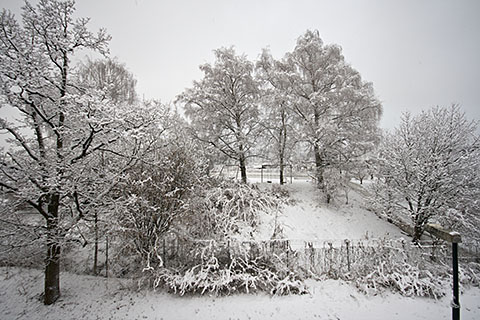 I think clean white sheets on everything are nice way to start into a new environment. My work here in Oslo has not yet begun, but I feel welcome by all the people I have met so far and I am very much looking forward to the time I will spend here.
I think clean white sheets on everything are nice way to start into a new environment. My work here in Oslo has not yet begun, but I feel welcome by all the people I have met so far and I am very much looking forward to the time I will spend here.
We’ll see how long it will be…
Opera voice & post-industrial Berlin.
December 2nd, 2008After some nagging by friends here in Berlin, I got my act together, wrapped myself into my at least 20 year old yellow tarpaulin cape and rode my bike through the wet streets of Berlin, entering the Berghain. This location, a former industrial building which shows huge amounts of concrete when you are inside, hosted the yellowlounge event: Patricia Petibon, who presented her debut album Amoureuses.
Everybody looked like we do: hovering around age 3X, not too stylish, not too mundane. A whole factory full of this kind of people. And in the middle of this peculiar crowd: a small stage with a Steinway & Sons piano. After more than an hour of recorded classical music tracks and light installations, the actual show began, split into two parts of about twenty to thirty minutes. I was quite enchanted by the way the soprano Patricia Petitbon presented her work (classical songs, some taken from operas, but mostly short songs written by composers dead and alive – most in French, many in English, and one or two in Italian). Good voice, of course, but also a charming performance that broke with some of the expectations that you might have about classical singing. I can definitely recommend the live performance – even if you have your doubts about people who can sing so loud that you (a) are vexed by the incongruence of bodily size and voice volume and (b) don’t understand what words they are supposed to sing.
Last train to Darmstadt.
November 27th, 2008Strange. This is the last time I am driving the ICE route to Darmstadt. After almost six years of commuting back and forth between Berlin and southern Hessia, it feels strange to look out at the landscape passing by. The interior of the trains, even with their changes over the course of the last years, may not be home, but it is a well known place to be. Bye Darmstadt, bye ICE, bye bahn.comfort status.
Faster, bigger, better.
November 17th, 2008Last week, I finally took the financial and technical plunge and exchanged my MacBook Pro’s internal 160 GB drive with a new 320 GB drive taken from a LaCie rugged hard disk case. The exchange was not as easy as it was with my trusty old Pismo Powerbook, but it also was much less of a hassle than exchanging the hard disk of my first generation Blueberry iBook. Using the excellent tutorials offered on iFixIt, replacing the drive is about a 15-30 minute procedure.
My main worry was if it would be possible to extract the hard disk from the LaCie rugged disk shell or if the nice rubber frame would be glued to the case, thus making it necessary to damage the case. However, you can just pull the very flexible rubber bumpers and then extract the metal shell. You don’t even need any special tools for exchanging the drive in the rugged disk frame. (You need a # 7 torx and a # 00 phillips for the MacBook Pro, though.)
Everything went fine except for the fact that I accidentally unplugged a tiny plug on the logic board when I took off the keyboard. Because of this, the MacBook Pro would not start at all after I exchanged the hard disk and screwed things back. It did not even make the famous gong sound anymore. What got me really worried was that the Magsafe power plug that goes into the laptop did not show the regular red or green light dot. Instead it blinked – very rapidly and very faintly! Uh oh. That did not look good at all. I disassembled the case once more, did not find anything wrong and reassembled it again. Still no startup, still only the worrying LED blinking. Well, I took the thing apart once more, now doing what all technicians do when machines fail for unknown reasons: unplug and replug every single plug that you can reach. In this case, I only reached the fourth plug when I noticed that is wasn’t firmly plugged in. Pushing it back into its socket. Screwing screws back into their sockets. Sacrifice a chicken. Turn around clockwise three times and counterclockwise seven times. Push the power button. Yay! Everything is working as it should be. Yours truly truly happy.
The hard disk that was in the 320 GB rugged disk enclosure is a 5400 rpm Hitachi HTS543232L9A300 – exactly the same model as was in there before, only with 320 instead of 160 GB. Since that means that more (i.e. the double amount) data is put on the same surface, the disk is quite a bit faster than the old one. This is especially noticeable during startups. Very nice!
Putting the data from the old drive on to the new drive was a bit more complicated than I thought, because I used the LaCie tool to format the new disk. The LaCie drive tool formats the disk with the old Apple Partition Table instead of the new GUID Partition Table. Since intel Macs can only boot from GUID partitioned drives, I had to reformat the disk and check the appropriate option in Apple’s Disk Utility before I could use the new drive to boot my MacBook Pro. After choosing the correct partitioning technique, I first wanted to use Carbon Copy Cloner to clone the contents of my old drive to the new one. But the clone was not bootable because of some strange permission issues. Again, going back to the tools provided by Apple made things work: I used Apple’s Disk Utility once more and told it to restore
the contents of my old internal drive to the new external drive. This went perfectly well. (I bought one of the triple interface rugged disk models and used the faster FireWire 800 to transfer the data. USB is well-known to suck with regards to data transfer rates…)
I also used this opportunity to expand my Boot Camp partition for Windows XP to double the former size. Thanks to the excellent tool Winclone this was quite easy. I first booted up Window XP and converted the disk from FAT32 to NTFS using the standard windows command. Then I booted back into Mac OS X and cloned the Boot Camp partition to a disk image using Winclone. Then I put in the new disk and used Apple’s Boot Camp Assistant to make a Windows partition twice the size of the old one. In the next step, I used Winclone to clone the contents of the disk image onto the new, larger Boot Camp partition. Finally I used the Expand Windows (NTFS) Filesystem…
command offered by Winclone to expand the partition to use the new, bigger size it offers. This worked perfectly well and this gives me enough room on my windows partition to install the new expansion pack for LOTRO when it arrives this week. Ha!
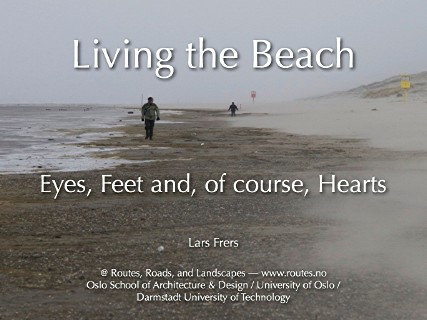 After leaving the conference on
After leaving the conference on 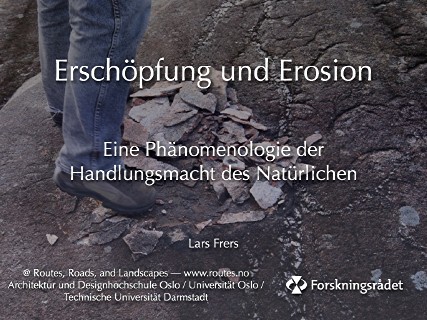 Am 18. und 19. Juni konnte ich erfreulicherweise auf der wirklich spannenden gemeinsamen Tagung der Sektionen Wissenschafts- und Technikforschung und Umweltsoziologie der DGS einen Vortrag halten. Zum Glück habe ich während des Vortrags die Verwendung von Füllwörtern wie
Am 18. und 19. Juni konnte ich erfreulicherweise auf der wirklich spannenden gemeinsamen Tagung der Sektionen Wissenschafts- und Technikforschung und Umweltsoziologie der DGS einen Vortrag halten. Zum Glück habe ich während des Vortrags die Verwendung von Füllwörtern wie 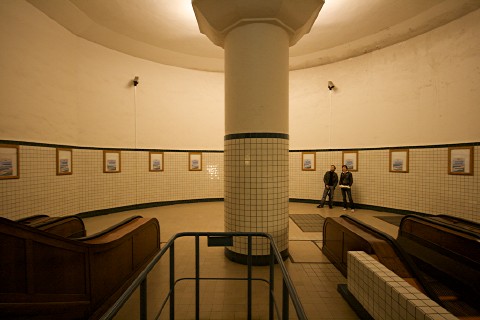 Three weeks ago, Alexander Schellow and I conducted a workshop called spatial research at the
Three weeks ago, Alexander Schellow and I conducted a workshop called spatial research at the
Leaving Boston and re-enabling comments.
March 1st, 2009Well, well, the stay in Boston has been very nice – new friends and old friends together created a very rich social life. And I even got an article finished! (More about that in another post sometime in the future.)
I had disabled the comment function after a massive spam attack and forgot to turn it on again afterwards. Now comments should be working again!
Tags: Boston, comment, spam, travel
Posted in tech | 1 Comment »